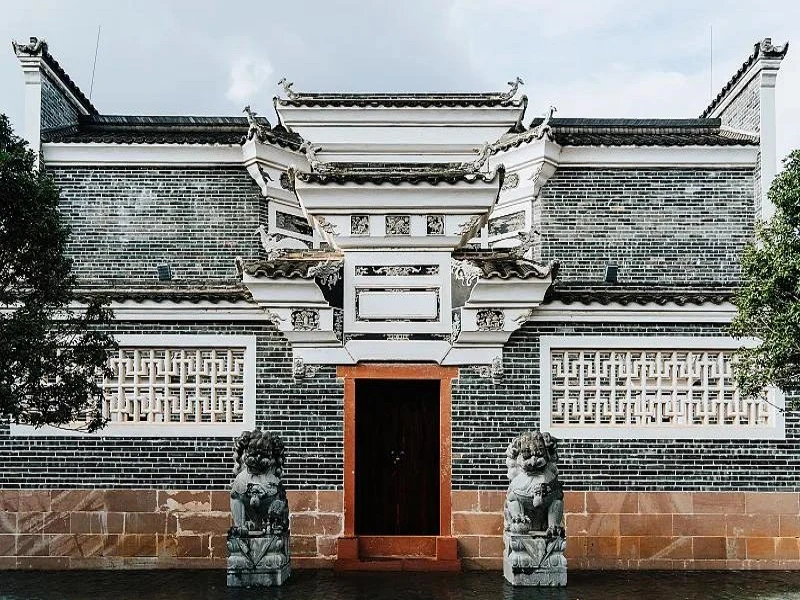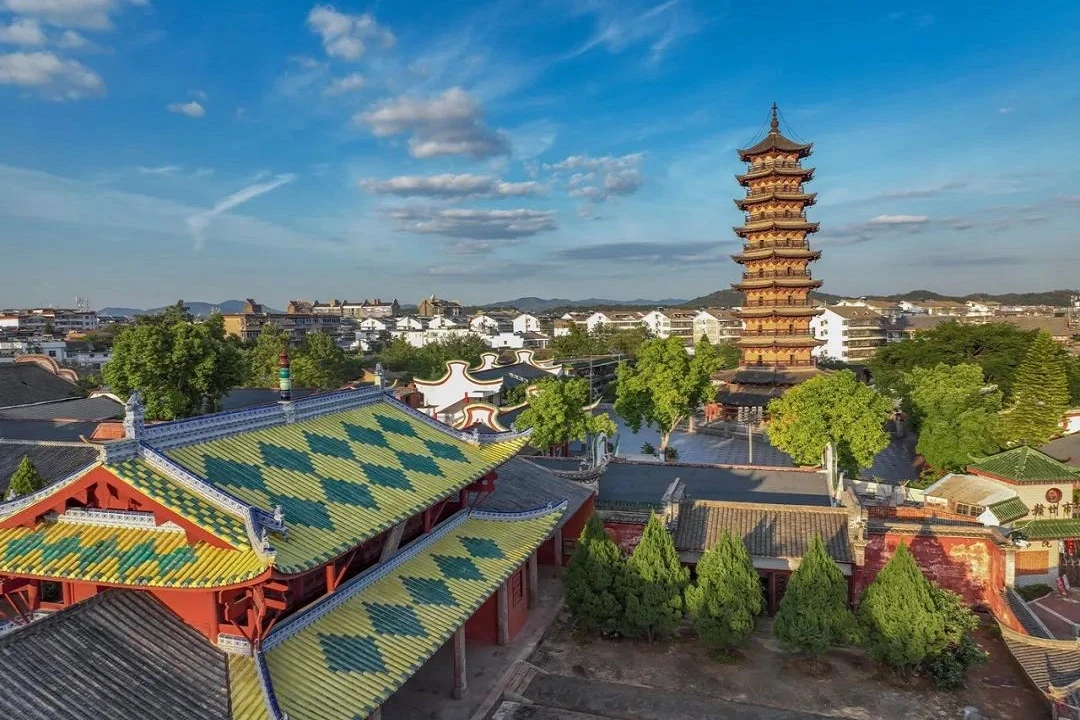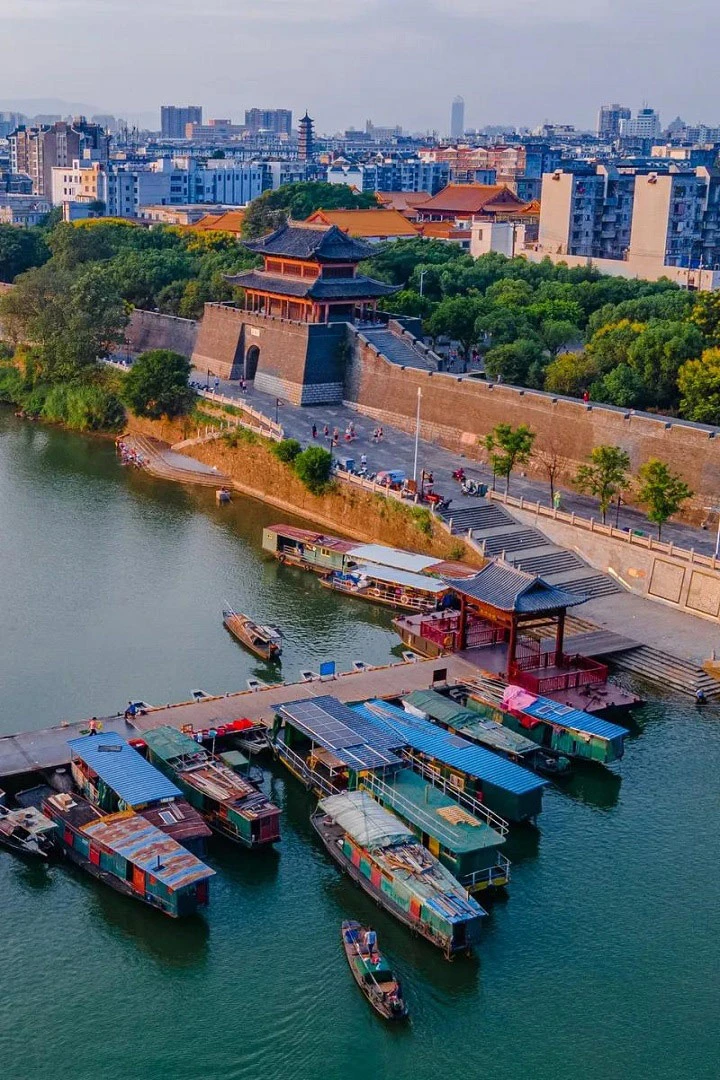A Journey Through Time and Flavor
Ganzhou, nestled in southern Jiangxi, may not be a name that immediately rings a bell, but mention the succulent Gannan navel oranges, and you'll see faces light up with recognition. However, Ganzhou offers much more than its famed citrus fruits. This historic city, once known as Qianzhou, boasts a rich tapestry of history and culture, dating back to the Song Dynasty.
To truly appreciate the charm of Ganzhou, start your day with a hearty breakfast. A steaming bowl of Ruijin beef soup is the perfect wake-up call. This dish features fresh yellow beef and sweet potato noodles. The beef, cut into strips or diced, is marinated with a touch of water and sweet potato flour before being cooked to perfection. The soup, rich and flavorful, can be customized with scallions, celery, ginger, chili, and soy sauce. Once your stomach is full, you're ready to explore the city.

Historical Treasures and Cultural Landmarks
Begin your exploration at the Ganzhou Confucian Temple, located in the old city of Zhanggong District. This temple, dedicated to education and the worship of Confucius, is the largest and best-preserved of its kind in Jiangxi. Built in the Qing Dynasty, the temple complex includes numerous structures such as the Dacheng Hall, which is adorned with yellow and green glazed tiles and elaborate porcelain decorations. The temple's architecture, with its elegant curves and intricate designs, showcases the unique blend of southern Jiangxi and Lingnan styles.
A visit to the Fu Shou Gou Museum offers a fascinating glimpse into Ganzhou's ancient drainage system. Designed during the Northern Song Dynasty by Liu Yi, this system features twelve water windows that automatically open and close based on water levels, effectively preventing flooding. This ingenious engineering marvel, resembling the Chinese characters for "fortune" and "longevity," stretches 12.6 kilometers and remains operational today, protecting the old city from water damage.
After the museum, take a stroll to the Weijia Courtyard (魏家大院), a sprawling complex built during the Qing Dynasty and completed in the early Republic of China. A stroll through the Weijia Courtyard offers a glimpse into the architectural beauty and cultural heritage of the Hakka people. Spanning over 200 years and three streets, this courtyard complex features residential buildings, kitchens, stables, storerooms, ancestral halls, granaries, and an old-style school. The brick and wood structures, adorned with exquisite carvings, exemplify the fine craftsmanship of the Hakka ancestors who migrated from the north and made Ganzhou their home.
This 200-year-old residence, with its intricate wood carvings, brick structures, and serene gardens, reflects the hard work and scholarly dedication of the Hakka people who built it. The courtyard's layout, with its interconnecting courtyards and winding corridors, offers a peaceful retreat in the heart of the city.
Culinary Delights and Local Specialties
No visit to Ganzhou is complete without indulging in its culinary delights. Start with a bowl of Tangpi noodles (烫皮面), a local specialty made from rice flour. These noodles can be enjoyed with a variety of toppings such as eggs, meat, and pickled vegetables. The Tangpi noodles are often paired with a flavorful dipping sauce, making for a delicious and satisfying meal.
For something truly unique, try the vinegar and pork intestine stir-fry, also known as "fried Dongpo." This dish, named after the famous poet Su Dongpo, combines fresh pork intestines with local sauerkraut for a tangy and spicy flavor. Another must-try dish is Hakka stuffed tofu, which features a savory filling of minced pork and vegetables encased in soft tofu.
As the day winds down, head to the Song Dynasty Night Market for a taste of Ganzhou's vibrant nightlife. This bustling market offers a variety of street foods and local delicacies, providing the perfect end to a day of exploration.
Ancient Wisdom and Modern Marvels
Finally, cap off your day with a visit to the ancient city walls and the historic floating bridge. Ganzhou's Song Dynasty city walls, stretching 3,664 meters, are the largest and best-preserved brick city walls from that era in China. Walking along these walls, you can touch the engraved bricks and feel connected to the craftsmen of centuries past.
From the wall, you can see the floating bridge that connects both sides of the Gong River. The floating bridge, composed of over 100 small boats linked by cables, spans the Gong River. Here, you can observe the daily lives of fishermen, cyclists, and street vendors, all contributing to the vibrant local scene. As the sun sets, head to the Eight Sceneries Terrace for a panoramic view of the city and the confluence of the Zhang and Gong rivers forming the Gan River, a breathtaking sight that perfectly encapsulates Ganzhou's unique blend of natural beauty and historical depth.
A visit to Tongtian Rock Caves, a stunning grotto complex carved into the cliffs, is another highlight. Dating back to the Tang Dynasty, these caves house over 279 grottoes and 359 statues, showcasing exquisite craftsmanship and intricate designs. The site has attracted scholars and philosophers for centuries, including Wang Yangming, the founder of the Yangming School of Thought, who lectured here and developed his philosophy of "the unity of knowledge and action."
Ganzhou's rich history, vibrant culture, and delectable cuisine make it a hidden gem worth exploring. Whether you're wandering through its ancient streets, savoring its local flavors, or marveling at its historical landmarks, Ganzhou offers a unique and unforgettable experience.



